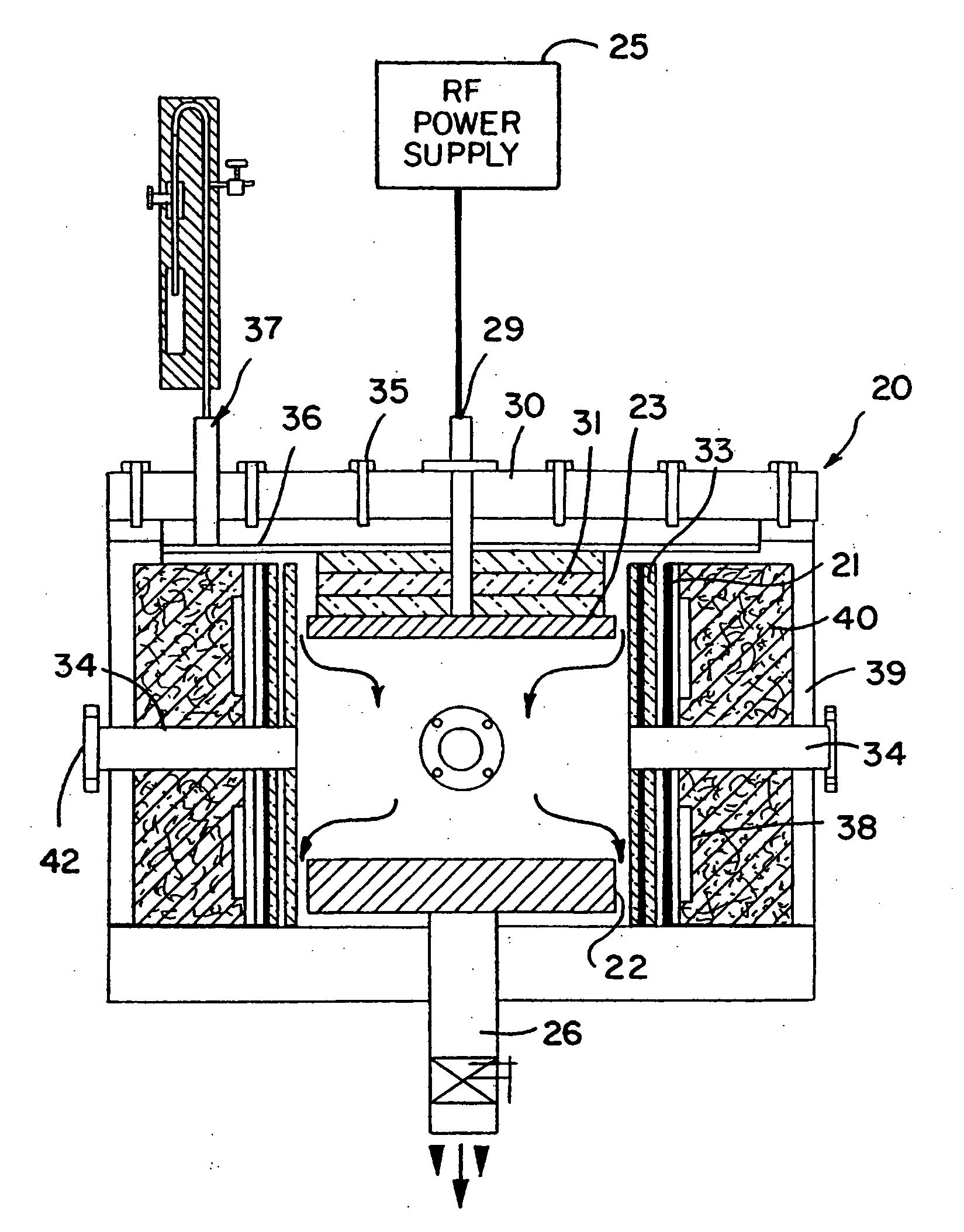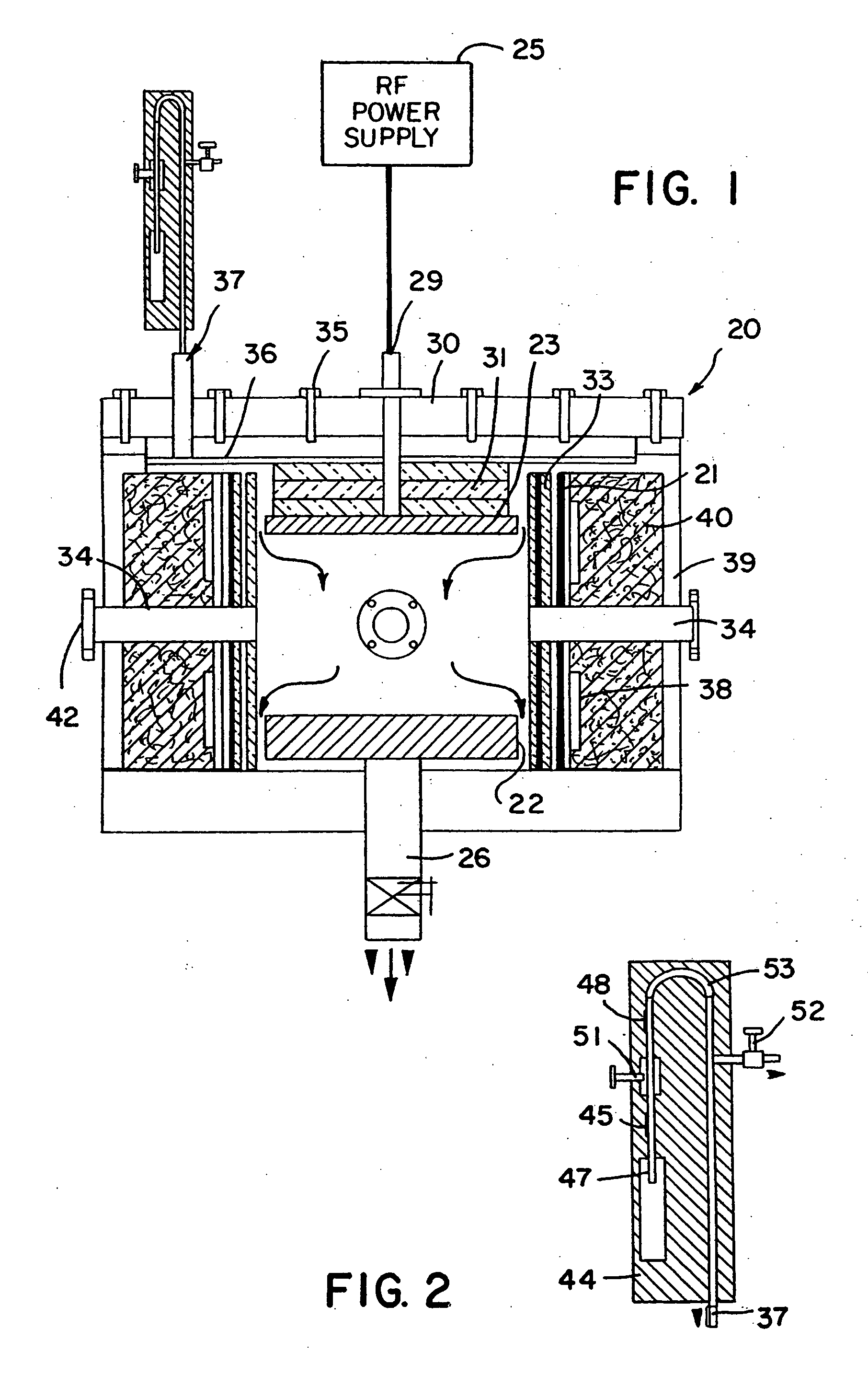Plasma-enhanced functionalization of inorganic oxide surfaces
a technology of inorganic oxide surfaces and functionalization, which is applied in the field of material processing and to, can solve the problems of difficult in vitro reproduction for industrial utilization, poor adaptability to various technological designs and recovery of enzymes, and excessive enzyme-density or multi-, and achieve the effect of rf-plasma-enhanced surface treatmen
- Summary
- Abstract
- Description
- Claims
- Application Information
AI Technical Summary
Benefits of technology
Problems solved by technology
Method used
Image
Examples
example 1
Attachment of DNA to a Glass Surface
Materials and Methods:
[0066]Glass slides obtained from Fisher Scientific (Pittsburgh, Pa.) were subjected to a water / oxygen plasma treatment under the following experimental conditions: Pressure of water and oxygen: 200 mTorr; RF-power dissipated to the electrodes: 200 W; Exposure time: 5 minutes. After the plasma treatment, the RF plasma chamber was pumped down to remove leftover reactive species.
[0067]Without breaking vacuum, covalent attachment of the epichlorohydrin molecules was performed by introducing the epichlorohydrin vapors over the plasma-treated surface under vacuum (pressure of epichlorohydrin: 1 Torr; reaction time: 30 minutes). After this step, the remaining epichlorohydrin was vented and the chamber pressure brought up to atmosphere.
[0068]The deposition of the oligonucleotides onto the surface was done using the fluid dispensation apparatus described in Rev. Sci. Instru., 75, 832 (2004) and in U.S. patent application Ser. No. 10 / 2...
example 2
Attachment of DNA to a Stainless Steel Surface
Materials and Methods:
[0070]Three stainless steel samples with a native oxide on their surfaces were subjected to a water / oxygen plasma treatment under the following experimental conditions: Pressure of water and oxygen: 200 mTorr; RF-power dissipated to the electrodes: 200 W; Exposure time: 5 minutes. After the plasma treatment, the RF plasma chamber was pumped down to remove leftover reactive species.
[0071]Without breaking vacuum, covalent attachment of the epichlorohydrin molecules was performed by introducing the epichlorohydrin vapors over the plasma-treated surface under vacuum (pressure of epichlorohydrin: 1 Torr; reaction time: 30 minutes). After this step, the remaining epichlorohydrin was vented and the chamber pressure brought up to atmosphere.
[0072]The deposition of the oligonucleotides onto the surfaces was done using an Eppendorf hand pipette capable of depositing 0.5 microliter spots. The oxidized stainless steel surfaces ...
example 3
Attachment of DNA to a Quartz Surface
Materials and Methods:
[0074]A quartz slide was subjected to a water / oxygen plasma treatment under the following experimental conditions: Pressure of water and oxygen: 200 mTorr; RF-power dissipated to the electrodes: 200 W; Exposure time: 5 minutes. After the plasma treatment, the RF plasma chamber was pumped down to remove leftover reactive species.
[0075]Without breaking vacuum, covalent attachment of the epichlorohydrin molecules was performed by introducing the epichlorohydrin vapors over the plasma-treated surface under vacuum (pressure of epichlorohydrin: 1 Torr; reaction time: 30 minutes). After this step, the remaining epichlorohydrin was vented and the chamber pressure brought up to atmosphere.
[0076]The deposition of the oligonucleotides onto the surface was done using an Eppendorf hand pipette capable of depositing 0.5 microliter spots. The quartz surface was spotted in nine places using the amine-terminated oligonucleotides. The sample ...
PUM
 Login to View More
Login to View More Abstract
Description
Claims
Application Information
 Login to View More
Login to View More - R&D
- Intellectual Property
- Life Sciences
- Materials
- Tech Scout
- Unparalleled Data Quality
- Higher Quality Content
- 60% Fewer Hallucinations
Browse by: Latest US Patents, China's latest patents, Technical Efficacy Thesaurus, Application Domain, Technology Topic, Popular Technical Reports.
© 2025 PatSnap. All rights reserved.Legal|Privacy policy|Modern Slavery Act Transparency Statement|Sitemap|About US| Contact US: help@patsnap.com



